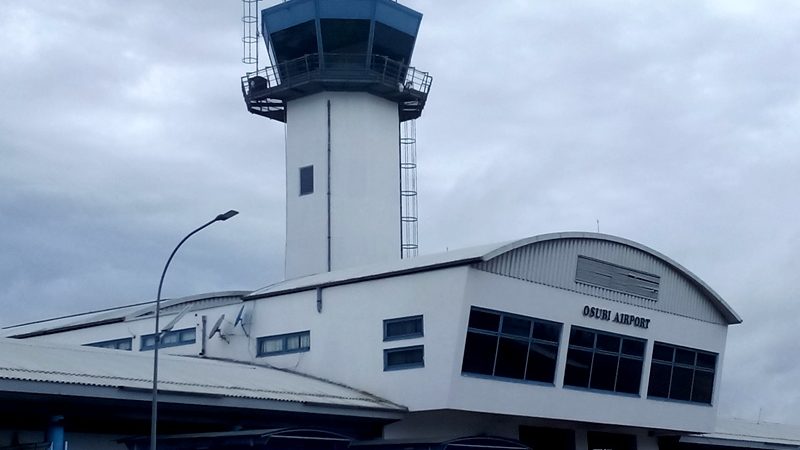What NCAA Can Do About Dana Air, By NSIB

The Nigerian Safety Investigation Bureau (NSIB) in the four investigation reports containing 20 safety recommendations, which it released yesterday, said: “The Nigeria Civil Aviation Authority should review Dana Air Limited training program and Standard Operating Procedures with a view to highlighting Crew Resource Management (CRM) and Threat and Error Management (TEM) as tools in management of abnormal or emergency.”
Other immediate safety recommendations in the report are that “The Nigeria Civil Aviation Authority should ensure Dana Air Limited comply with timely use of Checklist / Quick Reference Handbook particularly at critical phases of flight when dealing with abnormal and emergency situations in line with standard company operating procedures.
The Nigeria Civil Aviation Authority should ensure that Dana Air Limited adheres to standard Phraseology in communicating indication malfunctions during Abnormal or Emergency operations.”
“This preliminary report provides details of initial facts, discussions, and findings surrounding the occurrence. It also includes information gathered from witness accounts/statements, flight recorders, Air Traffic Control (ATC) recordings, weather reports, and preliminary inspection of the aircraft. The investigation is ongoing.
On 23 April 2024 at 08:20 h, an MD-82 aircraft with nationality and registration marks 5N-BKI, operated by Dana Airlines Limited as DAN0352, departed Nnamdi Azikiwe International Airport, Abuja (DNAA), for Murtala Muhammed International Airport, Lagos (DNMM). On board were 89 persons, including six crew members, with a fuel endurance of about 2 hours and 50 minutes. The Captain was the Pilot Monitoring (PM), while the First Officer was the Pilot Flying (PF).
At about 08:37 h, DAN0352 was airborne and climbed to FL300, its cruising level as cleared and the flight from Abuja was routine until the Final Approach to RWY 18L of DNMM, when the PF called for “GEAR DOWN”, and the PM selected landing gears “DOWN”. The Main Landing Gear indication lights were green while and the Nose Landing Gear (NLG) indication light was red. The crew stated that they recycled the Landing Gear lever selection was recycled UP and then DOWN, but the Nose Landing Gear Indication Light remained RED. The crew consulted the Quick
Reference Handbook (QRH) and proceeded with the EMERGENCY GEAR EXTENSION Checklist, but 11 the NLG Indication Light remained RED. The crew then proceeded with the EMERGENCY GEAR EXTENSION Checklist, but again, the NLG indication RED Light remained. The crew executed a LOW PASS over the station during the Go-Around and requested the ATC check if the Nose Landing Gear was extended. ATC responded, “It appears to be down.”
DAN0352 was vectored for another Approach runway 18L. Reporting 9 miles to touchdown, DAN0352 was given weather information, then cleared to land with a caution runway surface damp. As the crew selected the Landing Flap position, the Landing Gear Configuration Warning came ON and continued until the aircraft touched down. According to the Captain, the landing was smooth, the speed brakes did not deploy during the landing roll, the Captain lowered the nose landing gear on to the runway, then selected the spoilers – ON, followed by thrust reversers.
Upon landing, the Ground Spoilers did not deploy automatically, according to the crew. During the Landing Roll, the crew stated that there was severe vibration accompanied by a loud noise coming from the Nose Landing Gear area, which remained extended until 80 kts before it collapsed. This was followed by a loss of directional control, as the aircraft veered off to the left and exited the runway and stopped at about 2,343 m from the threshold, 36 m from the runway centerline. The Captain commanded evacuation, the cabin crew attempted but could not open the Main Entry Door. As the cabin crew opened the Forward Service Door, the Escape Slide deployed automatically, and all occupants evacuated without injury,” states the report.
According to NSIB, initial findings were that “The flight crew were licensed and certified to conduct the flight. The aircraft had a valid Certificate of Airworthiness. The crew selected the landing gear control lever “DOWN”, the Main Landing Gear Indication Lights were GREEN, while the Nose Landing Gear (NLG) Indication Light was RED. The crew stated that the landing Gear lever selection was recycled UP and then DOWN, but the NLG indication remained RED. The crew consulted the QRH and proceeded with the EMERGENCY GEAR EXTENSION checklist, but the NLG Indication Light remained RED. The crew executed a LOW PASS over the station during the Go-Around and requested the ATC check if the Nose Landing Gear was extended. ATC responded, “It appears to be down.”
Upon landing, the Ground Spoilers did not deploy automatically, according to the crew. During the Landing Roll, the crew stated that there was severe vibration accompanied by a loud noise coming from the Nose Landing Gear area, which remained extended until 80 kts before it collapsed. The Captain commanded evacuation, the cabin crew attempted but could not open the Main Entry Door. As the cabin crew opened the Forward Service Door, the Escape Slide deployed automatically, and the occupants evacuated safely without injury. The crew stated that an emergency was not declared.”







